NATO Baltic Air Policing Program: Organization, Threats and Responses
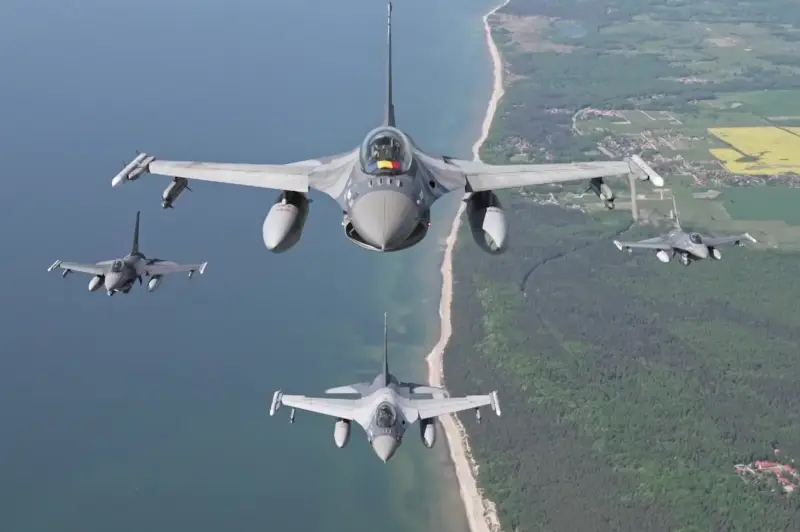
Romanian and Czech Air Force F-16 fighters over the Baltic Sea, May 2023. NATO photo
This spring marks the 20th anniversary of the Baltic Air Policing program, within the framework of which NATO member countries carry out joint air patrols in the Baltic region. In accordance with the established plan, they alternately deploy their fighters in the Baltic countries to protect the eastern borders of the Alliance. Recently, the joint patrol program has undergone some changes due to the development of the international situation and other factors.
20 years on duty
Preparations for a joint NATO watch and patrol program for the Baltic region were carried out at the beginning of the 29s, and all major activities were carried out before the Baltic states were admitted to NATO. On March 2004, XNUMX, the Alliance officially accepted Latvia, Lithuania and Estonia into its membership, and the Baltic Air Policing (BAP) duty began the very next day.
The first participants on duty and patrol were Belgian pilots flying four F-16AM fighters. They worked at the Lithuanian Siauliai airfield and regularly carried out combat missions. On July 1, they were replaced by Danish colleagues, then the British joined the events, etc.
Over the next 10 years, pilots, technical personnel and aircraft were rotated in accordance with the established schedule. At this stage, only the Siauliai air base was used in the program, and aviation the group mainly consisted of four aircraft of one type or another. Literally a couple of times it was increased to six.
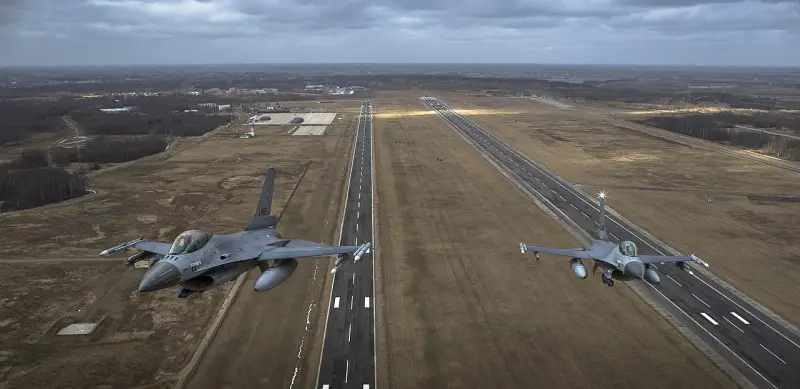
Dutch F-16s over Siauliai airfield. Photo by the Netherlands Ministry of Defense
In 2014, the military-political situation in Eastern Europe began to change, and NATO revised plans for the BAP. It was decided to increase the size of the forces on duty in the Baltic, as well as to use new airfields in the region. So, from May 1, 16 aircraft immediately went on duty. 4 Polish MiG-29s and 4 British Typhoons flew to the Lithuanian airfield, 4 Danish F-16AMs were on duty at the Estonian Ämari airfield, and the Polish Malbork base received four French Rafales. Estonian and Polish airfields were used for the first time within the BAP.
On September 1, 2014, the on-duty force was reduced to 12 aircraft - they were provided by Portugal (6 F-16AM), Canada (4 CF-188), Germany (1 Eurofighter) and the Netherlands (1 F-16AM). Subsequently, it was decided to reduce the number of BAP participants again. Since August 2015, the group has included no more than 8-9 aircraft at a time. As before, fighter flights were provided alternately by different NATO countries.
The next staff changes occurred at the beginning of 2022. At the end of January, against the backdrop of the developing Ukrainian crisis, it was decided to supplement the 8 aircraft present in the region with 6 American F-15Es and 4 Danish F-16AMs. In March-April, a group of 17 fighters was formed. Since then, at least 10-12 NATO aircraft have been constantly present in the region. With all this, the principles of group formation have changed. Previously, all aircraft of a new shift went on duty at the same time, but now this process can stretch for several weeks.
The last shift for the moment began duty on November 30, 2023. It included four Belgian F-16AMs, the same flight of Polish F-16Cs and four French Mirage 2000s. Belgian and French pilots are on duty at the Siauliai base, and the Poles were accepted at Emari.
Updated plans
The next rotation is expected in early March. According to plans, the group will include aircraft from the German Air Force and, possibly, several other countries. Apparently, there will again be at least 10-12 aircraft on duty. At the same time, some fighters will have to work at a new base, attracted to the BAP for the first time.
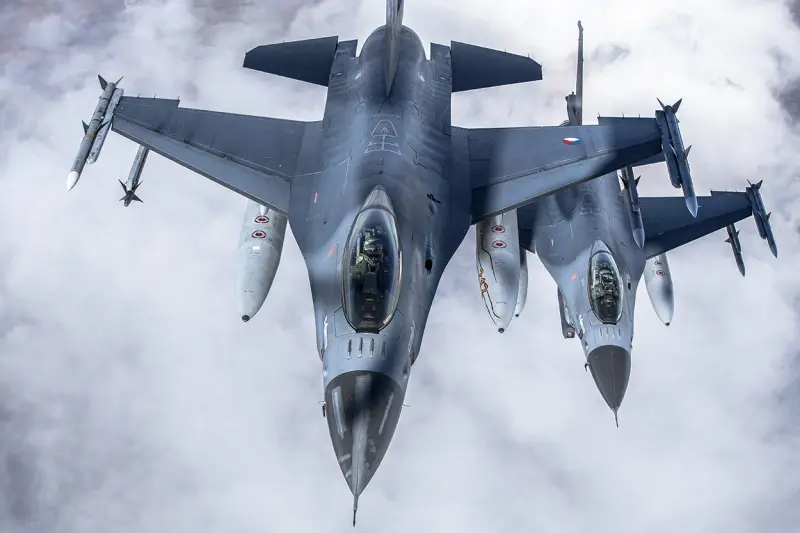
Dutch Air Force F-16 on duty. Photo by the Netherlands Ministry of Defense
At the end of May 2023, the Estonian Ministry of Defense announced that repairs and reconstruction of the Ämari airfield were planned for the next year. It will not be able to support NATO fighter jets for several months. In this regard, the Lielvarde airfield will be used in the joint program.
Work on Amari should take no more than 9 months and be completed next fall, after which the base will again be able to receive aircraft. It is understood that the next shift of NATO fighters will again be on duty at the Ämari base, and not at the temporary Lielvarde airfield. However, this was not clearly stated, and it cannot be ruled out that Estonia and NATO are planning some kind of trick.
Goals and objectives
The official goal of the Baltic Air Policing program is to protect NATO borders in the Baltic Sea region, as well as assist the three Baltic republics. The latter cannot provide constant monitoring of the air situation, duty and patrols in the region, which is why foreign air forces have to be involved in these activities.
It is not difficult to understand from whom NATO is “protecting” its Baltic borders. From its very beginning, the BAP program was directed against Russia. The duty forces involved in it are designed to resist Baltic aviation fleet, formations of the Kaliningrad region and formations “from the mainland”. The assigned tasks are generally being solved. NATO regularly reports missions to intercept and escort Russian aircraft in the BAP area of responsibility.
The basis of NATO tactical aviation is fighter-bombers capable of conducting air combat and striking ground targets. Accordingly, the BAP group, at least in theory, can solve not only defensive tasks and protect specified areas of airspace. If the appropriate situation arises, it can be used to strike Russian targets.
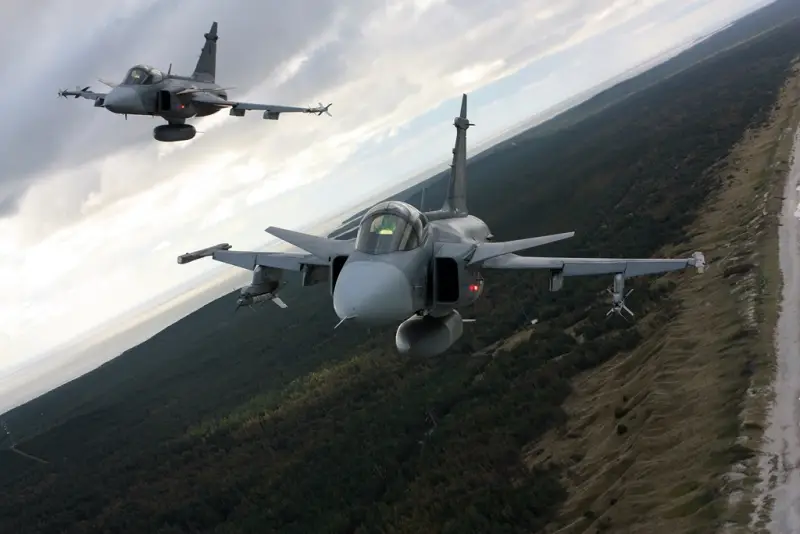
Czech JAS 39, October 2019. Photo by the Lithuanian Ministry of Defense
Attention should also be paid to basing issues. Thus, in the first years of the BAP program, only one airfield in Lithuania was used. Since 2014, bases in Poland and Estonia have been used. The latter is temporarily decommissioned, but will be replaced by a similar facility. Lielvarde airfield is positioned as a temporary replacement for Ämari, but it cannot be ruled out that in the fall of 2024 it will continue to be used for joint duty.
As a result, BAP forces will have four airfields in the Baltic region suitable for basing NATO aircraft. First of all, this will increase the size of the duty group. From the current figures of 10-12 aircraft, it can be increased to 14-16 units. or more. In this case, there will be no need to rebuild facilities or change logistics. During a period of threat, the size of the group may be further increased.
Response to a threat
NATO aviation, collected in the Baltic region under the Baltic Air Policing program, poses a certain threat to our western borders. However, the Russian Ministry of Defense knows about it, assessed it long ago and took appropriate measures. It is obvious that if the condition and potential of the potential enemy’s aviation group changes, the necessary measures will again be carried out.
The transfer of NATO aircraft to the Baltics has significantly increased the total number of aviation in the region, as well as increased its combat readiness. However, 10-16 fighters in Lithuania and Estonia do not provide decisive advantages. As the events in Ukraine show, for effective combat work and full-fledged solution of problems in a conflict of one scale or another, larger formations of tactical aviation are required.
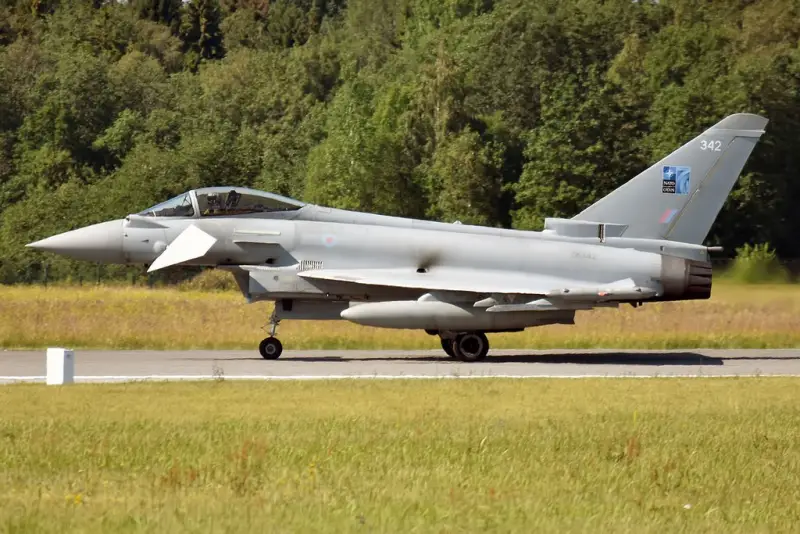
British Eurofighter Typhoon at Amari base, 2019. Photo by Wikimedia Commons
The threat to NATO aviation receives a corresponding asymmetric response. In the responsible and dangerous Baltic direction, the Russian armed forces have created a developed group of air defense systems and other forces. According to various foreign reports, a full-fledged A2/AD zone has been created in the region, attempts to enter which for any enemy forces will result in, at a minimum, significant losses and the impossibility of solving combat missions.
In addition, foreign experts are afraid of retaliatory or preemptive strikes. Air bases in the Baltics are often criticized for their insufficient infrastructure development. Thus, at the airfields of Lithuania and Estonia there are no protected shelters for aircraft and auxiliary equipment, there is no developed air defense, etc. With all this, the Russian army gets the opportunity to attack airfields almost unhindered with the help of modern weapons.
Towards the anniversary
In a few weeks it will be 20 years since the start of the Baltic Air Policing program. Joint duty on the ground and patrols in the air continues to this day, and NATO has no intention of abandoning it. Moreover, there is a gradual increase in the involved aviation group, the necessary infrastructure is being modernized, etc. All this indicates the Alliance’s desire to maintain its presence in the Baltic air and solve the problems of “containing” Russia.
Our country naturally views BAP as one of the threats from NATO and takes the necessary measures. Apparently, they are adequate to the current situation and make it possible to neutralize all the advantages that a potential enemy could gain by transferring aircraft closer to our borders. And it is obvious that this practice will be maintained - the Alliance will not be allowed to operate freely in the Baltic region.
Information